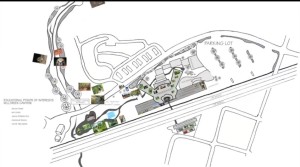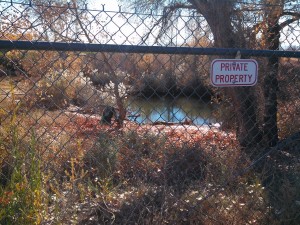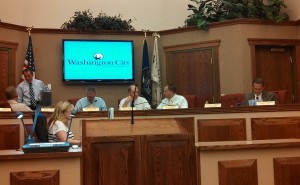
WASHINGTON – A nonprofit group’s move toward preserving “The Boilers” pond and Millcreek Canyon hit a snag Wednesday evening when a preliminary development agreement with the city was denied in a 3-2 vote by the Washington City Council.
Formed in 2012, The Boiling Springs Ecoseum & Desert Preserve nonprofit group seeks to build a large nature conservatory that would cover and protect the springs and its related water way. The desert preserve portion of the site would also include Millcreek Canyon.
The grand design

According to an online video presentation, the “ecoseum,” or eco-museum, would not only encompass The Boilers, but double its size as it restores the pond to its original levels. The facility is also slated to feature freshwater fish and coral, recycling waterfalls, an observation grotto and other attractions. A restaurant serving fresh foods grown onsite and a conference hall are also planned as a part of the overall facility. The complex would take up much of the undeveloped property between Buena Vista Boulevard and Interstate 15.
“There are some things in this world that are sacred,” said Nicole Warner, a representative for the ecoseum group. She told the city council The Boilers and waters that flowed through Millcreek Canyon “are sacred to the community” because of their significance to the history of the area.
Early settlers relied on the springs for fresh water and pretroglyphs found in Millcreek Canyon indicate Native Americans may have used the waters long before that.
Currently The Boilers spring is fenced off to the general public due to liability and safety issues.
Warner said her group believes The Boilers and Millcreek Canyon are worth protecting, restoring and preserving. The group had already met with the city council in previous meetings and had presented an agreement plan to the city council for approval.
While some of the council said they like the idea of protecting The Boilers, the development agreement plan and overall proposal did not sit well with others.
Council concerns
In its entirety the facility would cover an estimated 18.5 acres consisting of both city and private property. Washington City Manager Roger Carter also said the estimated low-market value for the property the group was asking for was $9.8 million.
“That’s a lot to give,” Councilmember Kress Staheli said, considering the city would be handing the land over for the project, as well as paying for some of the infrastructure.
Councilmember Thad Seegmiller asked the majority of the questions concerning the development agreement. He asked for clarification in certain sections and tighter language in others. He also wanted to make sure the city has a say in the direction the ecoseum project may take.

“The city’s contribution is such that it should have some say in on the board of directors,” Seegmiller said.
Warner said the ecoseum’s board of directors would go to the city with its plans, though also indicated discussion could be had on the issue since things were still in the preliminary stages.
Braden Hancock, another representative for the group, said the development agreement was built with a series of “off-ramps” for the city if it chose to terminate the agreement in its early stages. One of those off-ramps was the group’s ability to raise $2 million within three years after the agreement’s approved. If the benchmark isn’t met, then the city has the opportunity to back out of the agreement.
The group would also have to have up to 80 percent of its funding available before any ground could be broken for construction.
There was a concern about tying up property that has been zoned for commercial use as well. Provided funding has been procured, the ecoseum group hopes to begin building within three to five years of the development agreement’s approval.
However, councilmember Jeff Turek readily voiced his opposition to the agreement.
“I don’t see the return on investment the taxpayers are going to get from this,” Turek said. “I can’t support the (development agreement) moving forward.”
He also said he couldn’t justify telling his constituents that he gave millions of dollars worth of city property and their swimming hole over to a private entity that would charge them for access. He much rather favored seeing The Boilers turned into a city park that was free to everyone.
Turek said he also didn’t believe the Ecoseum would attract tourists, and that any money potentially brought in by the facility would be spent in St. George instead of Washington.
Warner did not agree. According to the group’s video presentation, Washington is in the middle of a tourism Mecca, given its location between various national parks and regional events like the Shakespeare Festival in Cedar City and numerous athletic events that take place in St. George like the St. George Marathon and Huntsman World Senior Games.
It is estimated that up to 47.9 million tourists travel through the region annually, yet there isn’t a primary attraction drawing them to Washington.
“We need something dynamic to set us apart,” Councilmember Bill Hudson said. “I’m very much in favor of this project.”

However, Hudson added he was not ready to vote on the development agreement that night, and thought that it should be tabled for the time being.
Turek proposed a motion to deny the agreement without further consideration, and Truman seconded the motion in order to push a vote. Turek’s motion was defeated in a 4-1 vote.
A motion to deny the agreement in its current form with the possibility of future consideration was called and seconded, and received a 3-2 vote. Seegmiller, Staheli and Ron Truman voted for the measure, while Hudson and Turek voted against it.
Moving forward
Despite the agreement being voted down, Warner said her group planned to resubmit the agreement.
“I feel we’re 90 percent there,” she said. Any development agreement resubmission would not happen until after the ecoseum group met with the city council a few more times to iron out the lingering details, she said.
Warner added that the group would also begin to enter a period of public campaigning in order to garner further support. So far she said there has been overwhelming support from the people she and others have spoken to.
“I think it’s wonderful,” Washington resident Marti Armstrong said of the ecoseum project. “I’m just really excited for it.”
Resources:
- The Boiling Springs Ecoseum & Desert Preserve
- Washington County Historical Society: Warm Springs, aka The Boilers
- Washington County Historical Society: Millcreek Canyon
Email: [email protected]
Twitter: @MoriKessler
Copyright St. George News, SaintGeorgeUtah.com LLC, 2013, all rights reserved.

Once lost, some things can never be recovered…and that meets my definition of ‘sacred’.
When we moved here from California, to escape the concrete jungle it had become, we were a bit put off by all the constant references to ‘heritage’ and ‘pioneer’…still am to some degree…but it seems to be only a convenient reference for some. Washington City has spent more on historic statues, building restorations and black lantern style streetlamps than it would need to budget for this preservation.
Where is the respect for what is truly important to Utah’s landscape? People don’t come here to see your stupid statues. They come to enjoy the outdoor environment, the red hills, the wonderful natural landscapes. The business plan stated here sounds amazing…much like a tiny wetland that was preserved in Walnut, CA. The community barely recognized it’s existence until it was threatened, then rallied to save it. In a rapidly growing community it’s these little oasis spots that define the history of a location. In the case of Walnut, it was also a training center for local college students. I’m sure that Washington City and St. George could find many uses for such a pristine place at the Boiler’s area.
Often, you’ll just get called an outsider and told “if you don’t like it, leave” if you don’t think mining and housing developments should cover every square inch of the state . Many seem to think turning into a concrete jungle would be some sort of high divine triumph even though they put down California for being that way. It’s kind of odd.
I would just like to ask Councilman Turek one thing here: If this is his “constituents swimming hole,” then why is it fenced off so his constituents cannot get to it?
I agree the boiler area should be revitalized. But, I like the idea of a public park much like the Nisson Park, where kids can play in the water. That is what the city has master planned for the area in the future. As a current resident of Washington City I feel uncomfortable in giving a private group property and water worth over $10,000,000 in which the city retains absolutely no control over. I say open the Boilers again for the citizens to enjoy!
I watched the presentation and talked to councilmen and the developers. It was clearly stated that the city retains the ownership of the property. I don’t understand why people are all of a sudden afraid of Non-Profit organizations? I am amazed how IHC and Dixie State University have strengthened our community(yes, they are non-profit organizations). If this place has been fenced off for more than 13 years now and this councilman brags that this is his swimming hole, does he really show in action that he genuinely cares to preserve this for the community that he is representing or caring only for his VIP access to memory lane?
I applaud this project for it’s ambition.
I am a descendant of those who settled Washington City. I am a firm believer of PRESERVE, not destroy. I saw the presentation of Braden Hancock and his sister Niki Warner. I was impressed with the whole idea they have for the Boilers Spring and the surrounding area. I give my vote to them for taking an area that has been neglected and closed off for use – they have a plan and I think they should have the right to raise their $2 million within the three year time frame.
This project will be a great improvement of what Is now an eyesore and trash filled area. No, we don’t need anymore commercial development in that part of town, lets set it aside and preserve what is still there.
I like the idea of the proposed planning for the area the boilers is a wonderful place I should know I learned how to swim there when I was a child my brothers and sisters learn how to swim there we and most of the residents of Washington County enjoy the clear water but knowing that it’s just going to be fenced off in a glorified manner doesn’t sit with me I think it should be turn in to a park people can enjoy and not just looked at